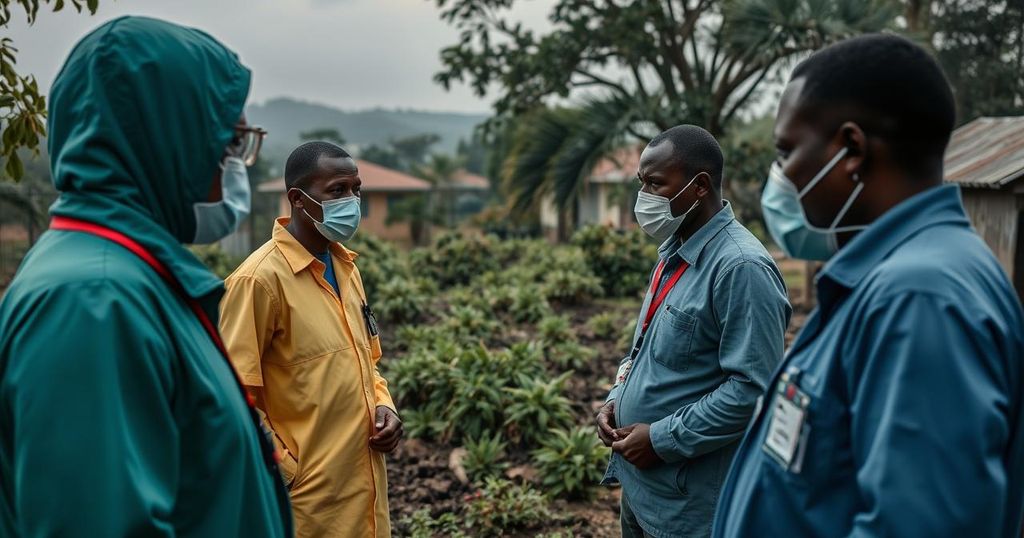Rwanda Reports Eight Deaths Linked to Marburg Virus Outbreak
Rwanda has reported eight deaths due to the Marburg virus, which spreads through close contact with infected individuals. The outbreak has led to 26 confirmed cases, prompting public health measures. The World Health Organization is providing support to control the spread of the virus, which has no authorized vaccine or treatment.
Rwanda has reported a tragic outbreak of the Marburg virus, which has resulted in the deaths of at least eight individuals. The Ministry of Health confirmed on Sunday that amongst the 26 confirmed cases, eight have succumbed to this highly contagious hemorrhagic fever. The Marburg virus, similar in nature to Ebola, is attributed to fruit bats and is transmitted through close contact with infected individuals’ bodily fluids or contaminated surfaces, such as bedding. Following the declaration of the outbreak on Friday, public health officials have urged citizens to refrain from physical contact to mitigate further infections. Among those affected, a significant number comprise healthcare workers. Approximately 300 individuals who were in contact with confirmed cases have been identified, with an unspecified portion placed in isolation to prevent the virus’s spread. Health Minister Sabin Nsanzimana emphasized the need for rigorous contact tracing and testing, stating, “Marburg is a rare disease. We are intensifying contact tracing and testing to help stop the spread.” The incubation period for the virus ranges from three days to three weeks, during which symptoms including fever, muscle aches, diarrhea, vomiting, and severe blood loss may manifest. The World Health Organization (WHO) is actively monitoring the situation and plans to intensify its support alongside Rwandan authorities. The WHO Director-General, Tedros Adhanom Ghebreyesus, indicated on social media that the organization is committed to assisting Rwanda as efforts to contain the virus escalate. Previous outbreaks of the Marburg virus have occurred in various African nations including Tanzania and Uganda, with the initial identification of the virus traced back to laboratory incidents in Marburg, Germany, and Belgrade, Serbia in 1967. Additionally, Rwanda has also acknowledged six cases of mpox, a related viral disease, and has initiated a vaccination campaign for this illness, anticipating further vaccine arrivals.
The Marburg virus is a dangerous pathogen associated with significant mortality rates, closely related to the Ebola virus. Both viruses originate from fruit bats and are highly transmissible among humans through direct contact. The current outbreak in Rwanda follows a concerning trend of hemorrhagic fever incidents across Africa. The country is in a state of vigilance, executing extensive public health measures, including contact tracing and community awareness campaigns. The World Health Organization, which has labeled the situation a global health concern, plays a crucial role in coordinating responses and providing healthcare support to affected regions.
In summary, Rwanda is facing a significant health crisis due to the Marburg virus outbreak, with eight confirmed fatalities and a proactive approach involving contact tracing and community health education. The collaboration with international health organizations is vital in managing and containing the situation. Continued vigilance and public awareness are essential to prevent further transmission and protect the health of the population.
Original Source: www.aljazeera.com




Post Comment